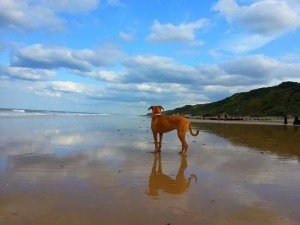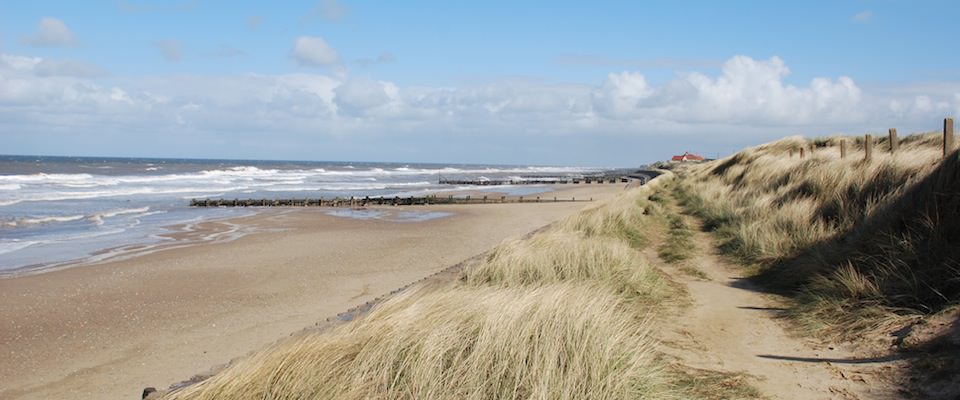There a few restrictions along the North Norfolk Coast between May 1st and September 30th, covering where you can and can’t walk your dog along the beaches and promenades.
This useful pdf file Dogs welcome in North Norfolk is produced by North Norfolk District Council. Beachscape & Tides are situated to the right of the restricted beaches as per the Bacton picture, therefore the beach immediately in front of the park is unrestricted. There are some printed copies within the properties.
 Here’s a great article telling you more about the dog friendly beaches. Just remember where there are restrictions, there are still beaches either side of these that are unrestricted, so don’t be put off exploring them all.
Here’s a great article telling you more about the dog friendly beaches. Just remember where there are restrictions, there are still beaches either side of these that are unrestricted, so don’t be put off exploring them all.
Go here to view the dog restrictions on Great Yarmouth beaches and Gorleston beaches.
Here are some tips to make sure you all stay safe on the beach.
- Check the tide times before you go. Our properties each have a tide clock to assist you in your planning and there is a feed for Cromer tide times on our home page.
- Don’t forget poo bags so you can clean up after your dog. There are some in the kitchen cupboards if you run out.
- Make sure your dog has a collar, ID tag and preferably is microchipped, just in case he gets lost.
- Don’t assume your dog can swim. All dogs have to learn to swim just like us. Some breeds are naturally good strong swimmers, but other breeds (such as corgis and pugs) are not. If your dog is not used to swimming then the sea is not the place to start so make sure he doesn’t get out of his depth.
- Drinking salt water is a bad idea. For some reason dogs do drink salt water, but it doesn’t do them any good and can make them vomit, or worse lead to potentially fatal salt poisoning. Ensure you have plenty of fresh water to keep you both hydrated.
- Consider a life vest if you are planning to swim, sail or surf with your dog. You can buy life vests for dogs of all sizes. Waves and currents can quickly exhaust your dog, especially in cold water. Some life vests also have a handle on the back, making it easy for you to lift your dog out of the water.
- Consider a doggie sunscreen – especially for dogs with thin or pale fur and apply to areas such as the nose and ears.
- Don’t overdo it. Running on sand is more tiring than on grass, so don’t expect your dog to be able to run and play for as long as he might on his normal walk. And start slowly, giving him time to warm up.
- Make sure your dog has a shady area to rest in and remember that sand can be scorching on paws on a hot day.
- Be careful to avoid heat stroke – watch for signs of overheating such as excessive panting, drooling, co-ordination problems, vomiting and/or diarrhoea and collapse.
- If your dog suffers from arthritis or other joint conditions limit the amount of time he spends swimming in cold water. He may think it is great fun at the time, but he will probably be very stiff and sore the following day.
- At the end of the day check your dog over thoroughly for cuts and scrapes, rinse him thoroughly to remove salt and sand from his coat and paws and dry him to ensure he does not get chilled.
Have fun!




